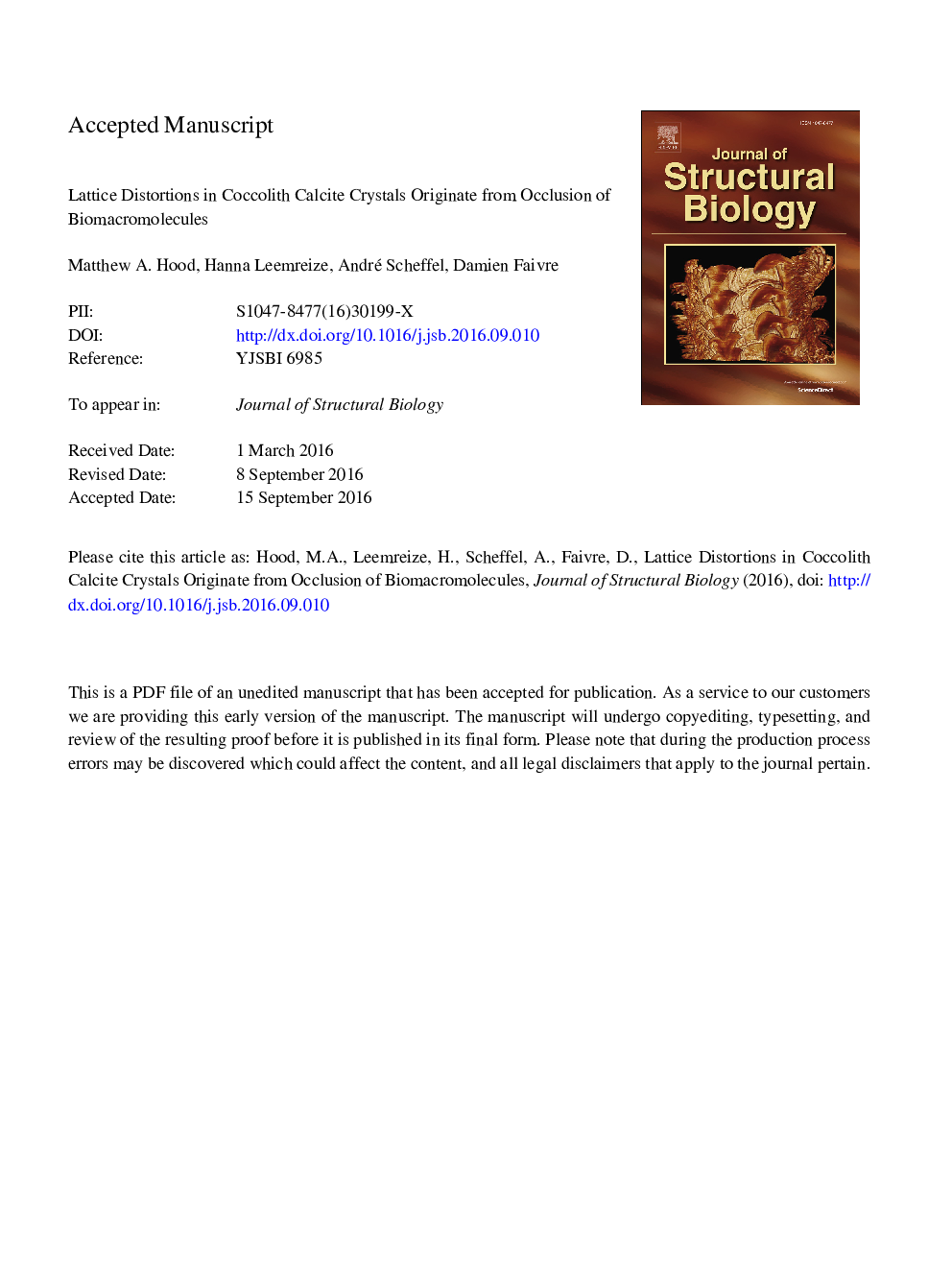| Article ID | Journal | Published Year | Pages | File Type |
|---|---|---|---|---|
| 5591620 | Journal of Structural Biology | 2016 | 29 Pages |
Abstract
During biomineralization, organisms control the formation and morphology of a mineral using biomacromolecules. The biomacromolecules that most strongly interact with the growing crystals frequently get occluded within. Such an observation has been recently obtained for the calcium carbonate producing coccolithophore species Pleurochrysis carterae. Coccolithophores are unicellular algae that produce calcified scales built from complex-shaped calcite crystals, termed coccoliths. It is unclear how widespread the phenomenon of biomacromolecular occlusion within calcite crystals is in calcifying haptophytes such as coccolithophores. Here, the coccoliths of biological replicates of the bloom forming Emiliania huxleyi are compared with that of Pleurochrysis carterae, two species with different coccolith morphologies and crystal growth mechanisms. From high-resolution synchrotron X-ray diffraction, changes in the lattice parameters of coccolith calcite, after heating to 450 °C, are observed and associated with macrostrain originating from occluded biomacromolecules. We propose a mechanism governing the biomacromolecules' interaction with the growing coccolith crystals and their likely origin.
Related Topics
Life Sciences
Biochemistry, Genetics and Molecular Biology
Molecular Biology
Authors
Matthew A. Hood, Hanna Leemreize, André Scheffel, Damien Faivre,
